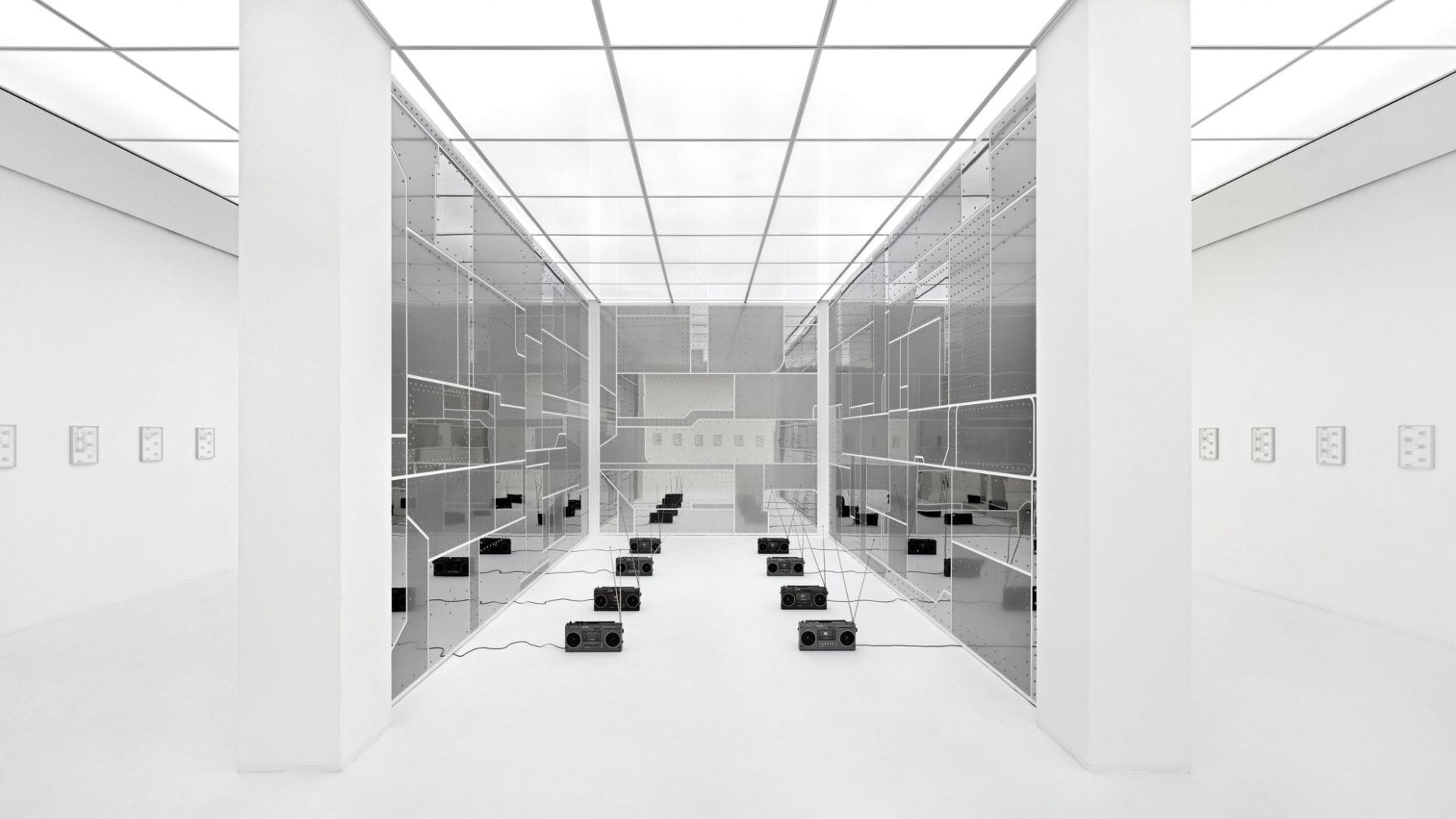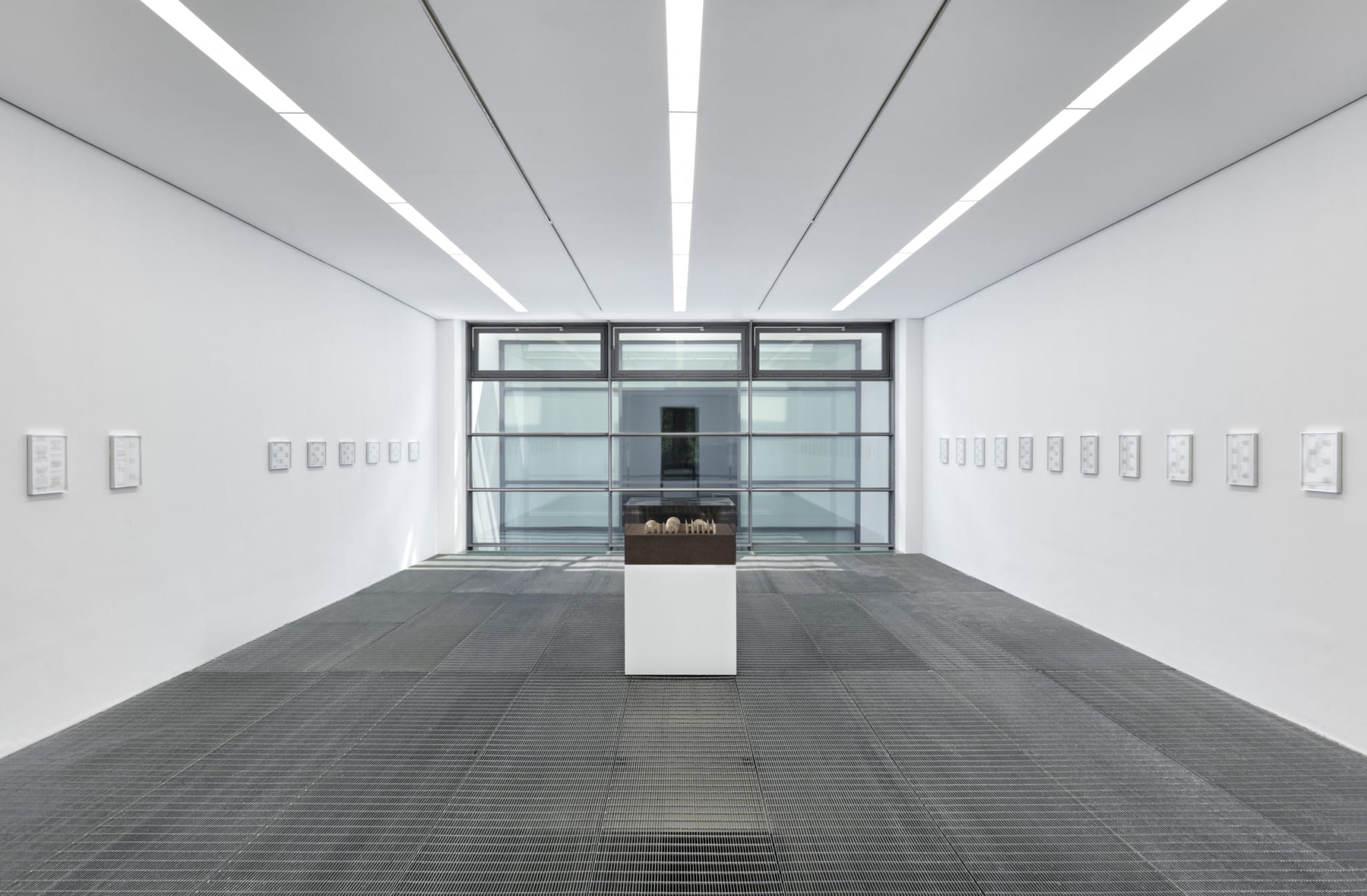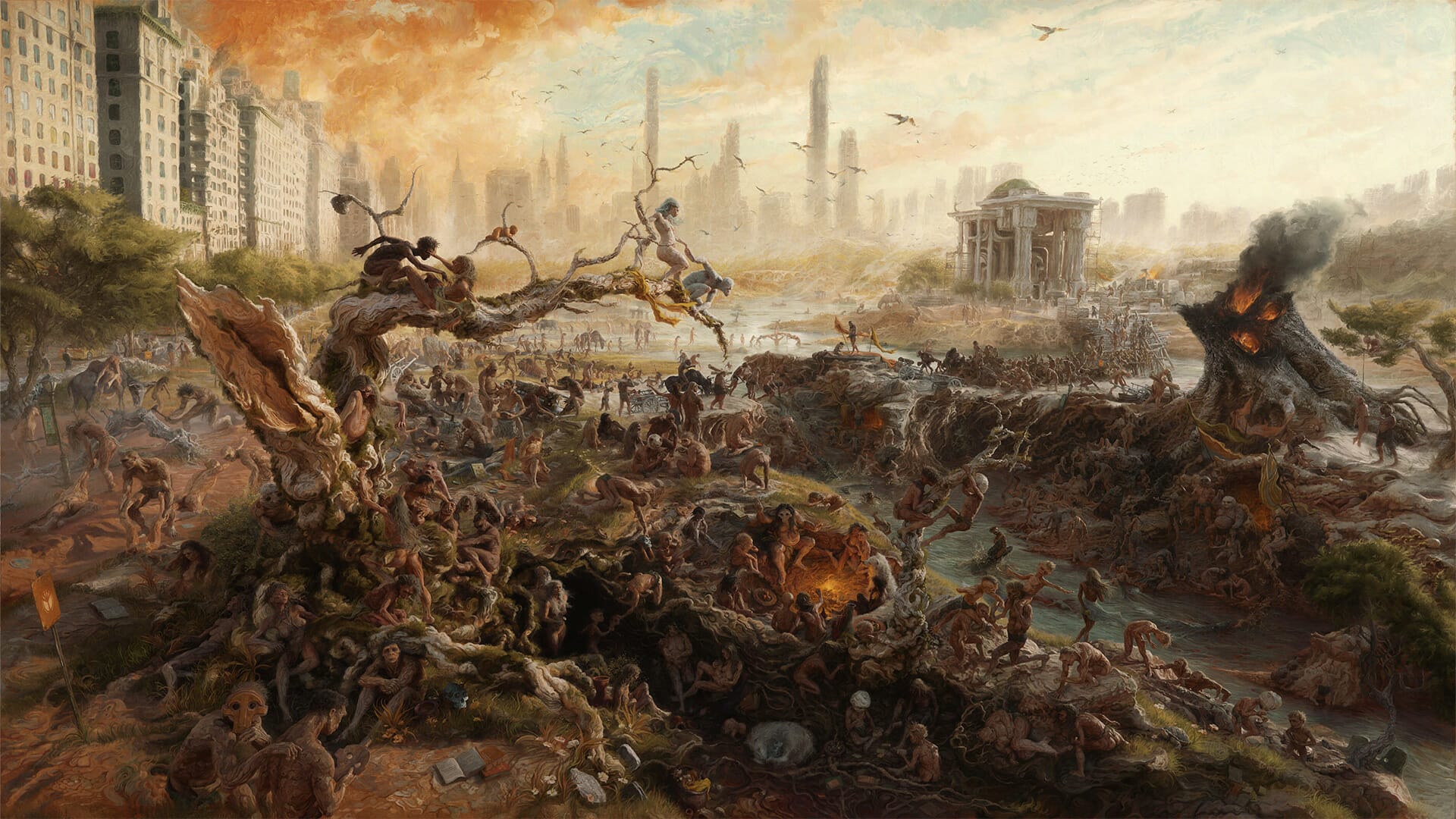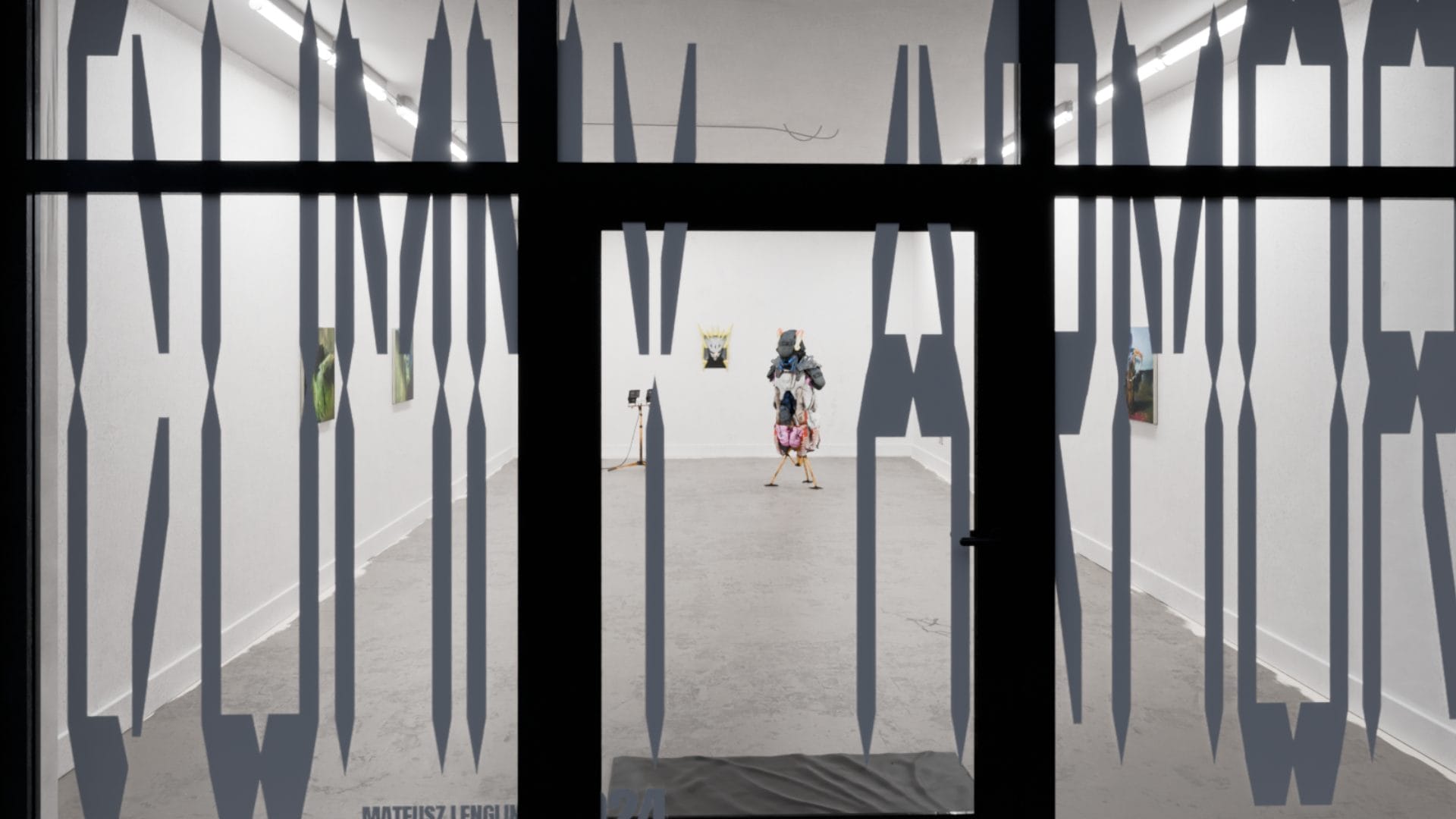
Unveiling the Unseen: Sung Tieu’s Multidisciplinary Exploration of Power, Control, and Perception
Born in Hai Duong, Vietnam, in 1987 and currently residing in Berlin, Sung Tieu is an artist whose multidisciplinary practice explores the intricate intersections of globalized capitalism, information control, and geopolitical tensions rooted in colonialism and Cold War ideologies. Through her use of sculpture, sound, video, architecture, and installation, Tieu unveils the often invisible mechanisms that govern our daily lives, highlighting the ways in which bureaucratic agencies and psychological strategies manipulate public opinion and exert social control.
Tieu’s work is distinguished by its critical interrogation of the limits of our understanding, challenging the audience to discern between the known and the unknown. Her pieces not only document but also deconstruct systems of power, making visible the structures that would otherwise remain hidden. This analytical and deeply reflective approach is evident in exhibitions such as “Infra-Specter” at Amant in Brooklyn and “Civic Floor” at the MIT List Visual Arts Center, marking her first solo shows in the United States.
In an artistic context where research underpins creation, Tieu uses her art to make complex and often obscure data accessible to the public, filling informational gaps and inviting viewers to form their own understanding of the issues addressed. Through collaboration with experts from various fields, Tieu uniquely merges art with science, politics, and history, creating works that are not only visually striking but also intellectually stimulating.
In this introduction to her work, we will explore how Sung Tieu addresses themes of control, surveillance, and power through a critical and sensory lens, shedding light on hidden industrial processes and the complex dynamics shaping our world. Her pieces, rich in meaning and provocation, invite us to critically reflect on the reality around us, challenging our common perceptions and raising profound questions about truth, power, and justice.

Sculptures and Installations
Sung Tieu’s sculptures represent a fundamental aspect of her artistic practice, reflecting her interest in prison architecture and surveillance methods. These works not only echo the aesthetics of minimalist art but also question the authoritarian and dehumanizing functions of control structures. Through her sculptures, Tieu invites the audience to reflect on the use of space as a tool for repression and surveillance.
A quintessential example of her work is the series of sculptures presented in one of her recent exhibitions. These black steel pieces reference various prison architectural models, from the radial prisons of the 1840s to modern prison structures. Each sculpture is mounted on a high pedestal, making the interior of the structure difficult to see without using a provided step ladder. This approach creates a sense of distance and inaccessibility, emphasizing the oppressive nature of surveillance structures.
Tieu’s sculptures, while sharing formal aspects with minimalist art, go beyond mere industrial aesthetics to explore themes of control and dehumanization. The internal structures of the sculptures, filled with earth, reference the locations they come from, creating a tangible connection between the artwork and the geopolitical context it represents. This use of material and space invites the audience to consider how architecture can be used as a tool for social control and repression.
Themes of Control and Surveillance
Themes of bureaucratic control and surveillance are recurrent in Tieu’s work. Her pieces highlight the psychological and emotional impact of these systems, exploring how governance methodologies influence and shape human behavior. Through the use of sculptures, installations, and murals, Tieu unveils the power dynamics hidden within bureaucratic structures and control mechanisms.
For instance, her installations based on American immigration documents emphasize the compression of human experiences into bureaucratic forms. These works illustrate how the spatial parameters of asylum forms restrict the ability to tell personal stories, imposing rigid and dehumanizing limits. The accompanying stainless steel plaques quantify the available space for expressing life experiences, reducing human narratives to mere numbers and boxes.
Through these works, Tieu underscores how bureaucracy and surveillance not only limit individual freedom but also manipulate the perception of reality. Her sculptures and installations offer a powerful and visually engaging critique of control systems, inviting the audience to reflect on the ethical and social implications of these mechanisms.

Recent Projects and Recurring Themes
One of Sung Tieu’s most significant recent projects is “Liability Infrastructures,” commissioned by Amant. This project originated from observing construction sites around the museum and discovering the North Brooklyn Pipeline, a gas pipeline that National Grid, a gas utility company, was attempting to build. Tieu’s curiosity about this project led her to delve deeper into the subject of fracking and its environmental implications.
“Liability Infrastructures” comprises three main elements. The first is a mural listing the chemicals involved in the hydraulic fracturing process, with about 1,900 ingredients etched onto metal plaques mounted on a wall. This mural highlights the complexity and limited transparency of the information provided by fracking companies, which often protect the ingredients as trade secrets.
The second element consists of sound sculptures created after Tieu recorded the earth’s vibrations at various fracking sites in Pennsylvania and West Virginia. Using a geophone, Tieu captured what the earth “hears” during the fracking process, creating a unique sensory experience that brings the audience closer to these hidden industrial processes.
The third element is a series of stainless steel signs installed in the museum courtyards and on its facades, indicating the distance from specific gas pipelines. These signs bring the outside in and vice versa, creating a tangible connection between the museum and the surrounding industrial infrastructure.
In Cold Print
“In Cold Print” is another significant project in Tieu’s body of work, initially presented at Nottingham Contemporary in 2020. This series of newspaper clippings focuses on Havana Syndrome, a phenomenon first reported in 2016 by U.S. diplomats in Cuba who suffered brain injuries and other ailments, allegedly caused by a sonic weapon. The exhibition explores how different interpretations and presentations of information can influence public perception.
In her exhibition at Amant, Tieu presented a new iteration of “In Cold Print,” alternating between articles that support and criticize the existence of Havana Syndrome. In the first half of the exhibition, the articles were critical of the claims, while in the second half, they were more affirmative. This change in perspective invites the audience to reflect on how information is used and manipulated to support different narratives.
In both “Liability Infrastructures” and “In Cold Print,” recurring themes in Tieu’s work, such as transparency, secrecy, and the manipulation of information, are evident. Tieu uses her art to reveal the complexities hidden behind apparent facts, inviting the audience to critically reflect on the presented reality. Through the use of industrial materials, sound recordings, and scientific data, Tieu creates works that stimulate a deeper understanding and challenge common perceptions.

Interdisciplinary Collaborations
One of the most distinctive aspects of Sung Tieu’s work is her ability to collaborate with experts from various fields to enrich her artistic practice. Tieu recognizes that much of her work is research-based, often dealing with complex data that requires specialized interpretation. This interdisciplinary collaboration not only deepens the richness of her works but also allows her to present information that might otherwise remain inaccessible or difficult to understand.
Tieu collaborates with scientists, data analysts, researchers, and journalists to gather and interpret relevant information for her projects. A significant example of this collaboration is the “Liability Infrastructures (2023)” project, commissioned by Amant. During her research for this project, Tieu worked closely with experts to identify the chemicals used in the hydraulic fracturing process, a task complicated by the commercial secrecy surrounding many of these ingredients. These collaborations enabled her to create a mural listing approximately 1,900 chemicals, providing the public with a detailed and critical view of what is introduced into the environment during fracking.
Use of Information
Another central element in Tieu’s work is her approach to the use of information. Tieu emphasizes the importance of relying on factual and documented research, avoiding taking a defined position. Instead, she presents facts in a way that allows the audience to draw their own conclusions. This method is evident in the “In Cold Print” project, a series of newspaper clippings Tieu wrote about Havana Syndrome. The exhibition presents two different perspectives on the topic, alternating between critical and affirmative articles. This approach allows viewers to see how the presentation of information can influence public perception and how facts can be used to support opposing arguments.
Tieu is particularly interested in how data and information can be used to argue for or against something without making false claims. For example, in the context of hydraulic fracturing, an agency might claim that methane found in groundwater has always been present in the subsurface, while others might argue that it is the result of fracking activities. This type of ambiguity and the interpretation of cause and effect are recurring themes in Tieu’s work, as she seeks to reveal the complexities and manipulations inherent in the use of language and information.

Sung Tieu stands out in the contemporary art scene for her ability to intertwine art, research, and social critique. Through a multidisciplinary and collaborative approach, Tieu provides audiences with an in-depth and complex examination of relevant themes such as information control, globalized capitalism, and geopolitical tensions. Her works, which are rich in meaning and provocation, challenge viewers to critically reflect on the reality around them, pushing them to question common perceptions and consider the deeper implications of truth, power, and justice.
Tieu’s art is not only visually striking but also intellectually stimulating, inviting the audience to engage with complex issues through a new lens. By revealing hidden industrial processes and exploring the power dynamics embedded in bureaucratic and surveillance systems, Tieu’s work provokes a deeper understanding of the world we live in. Her exhibitions serve as a testament to the power of art to both document and transform our perception of the socio-political landscape, encouraging a more informed and critical engagement with the forces that shape our lives.
In conclusion, Sung Tieu’s practice exemplifies the profound impact that interdisciplinary collaboration and meticulous research can have on contemporary art. Her ability to reveal the unseen and challenge the status quo makes her a significant and influential voice in today’s artistic and cultural dialogue.
fakewhale
Founded in 2021, Fakewhale advocates the digital art market's evolution. Viewing NFT technology as a container for art, and leveraging the expansive scope of digital culture, Fakewhale strives to shape a new ecosystem in which art and technology become the starting point, rather than the final destination.
You may also like
Contemporary Masters: From Galleries to Blockchain
From Galleries to Blockchain: The Contemporary Blue-Chip Artists who Embraced NFTs With the advent o
The Monument Game: Art’s Collective Pulse
“The Monument Game” accumulated 1116.66 ETH, nearing a valuation of almost $1.9 million. However
Dummy Armor at TEST_AREA_GALLERY, Digital Space
Dummy Armor by Mateusz Lengling, curated by LENG____LING, at TEST_AREA_GALLERY, Digital Space, 07/10




